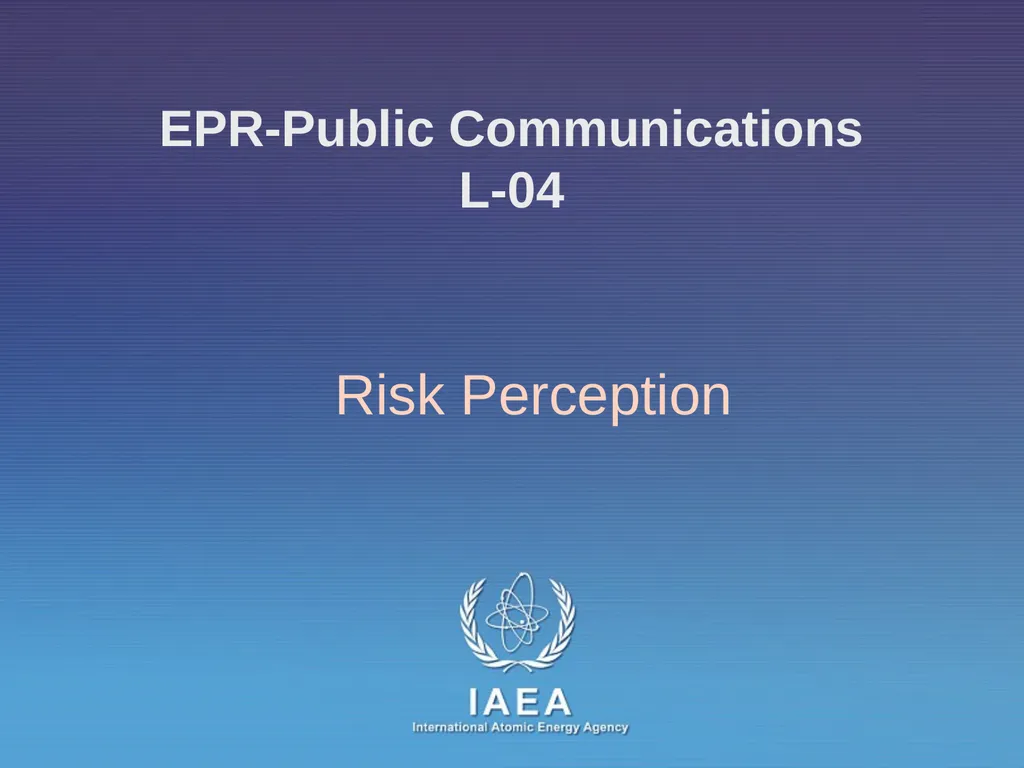
EPR-Public Communications L-04 Risk Perception
Author: calandra-battersby | Published: 2025-08-08
Description: EPR-Public Communications L-04 Risk Perception Risk perception Experience from nuclear and radiological emergencies highlights public communication as one of the most important challenges in emergency management. Sometimes, an event is not
Download Presentation
Download the PPT/PDF: Download
Transcript:
Loading transcript…